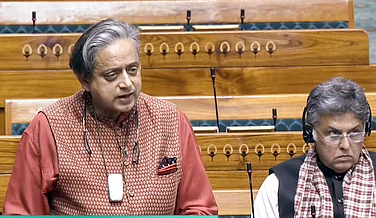West Bengal was one of the pioneering states in India to start harnessing renewable energy resources. The state, way back in 1994–95, set up solar projects to bring electricity to remote villages in the Sundarban region, which was outside the coverage of the power grid.
Nearly three decades later, however, the state stands as one of the worst performers in tapping renewable energy resources. In 2020–21, nearly 94% of electricity that West Bengal generates came from thermal power, whereas at the national level this share has come down to below 70%.
Here is a classic example that aptly reflects West Bengal’s lack of interest in transitioning from thermal power to renewable energy.
In 2015, prior to the climate conference in Paris, the Union government asked states to send proposals for setting up high-capacity solar parks in a bid to expedite the growth of renewable energy in the country. West Bengal was among those states that sent one.
A 125-megawatt (MW) capacity solar park, at a cost of Rs 750 crore, was planned on a 532-acre plot of land the state government owned at Dandapatrabar in the coastal Ramnagar area of East Midnapore district. This was to be the largest solar project the state ever took up–the existing highest capacity being only a minuscule 10 MW. The project was approved in 2016 and the state received Rs 25 lakh from the Union government for preparing a detailed project report, which was finalised in 2020. By 2021, the government made progress towards getting a soft loan of Rs 600 crore from a German bank.
But in October 2021, the government decided to hand over the land for the proposed Tajpur port. This June, the Union government informed the Parliament that West Bengal had canceled the solar project.
The solar project has now been allotted land in Goaltore of neighbouring West Midnapore district. The local residents are, however, up in arm against the project. They say that the Goaltore land was reserved for an industrial park, making them hopeful of job opportunities as and when industries would come up there. A solar park would generate few jobs. Going by a government document, the 125 MW project would have generated employment for 50 persons only.
Even if local opposition is dealt with, the state government will have to file a fresh application before the Union government for the Goaltore land, a fresh DPR upon getting approval and then begin the tendering process afresh. It is going to take a few more years, at least.
A Study in Contrast
In 2020–21, of the total 77,478.05 mega units (MU) of electricity that West Bengal generated, 72,735.07 MU or 93.87% was from thermal power. Only 1,530.7 MU or 2.1% came from solar, small hydro and bio power, while another 3,212.28 MU came from large hydro projects.
Analysis of latest government data shows that West Bengal, Bihar, Odisha and Jharkhand together account for only 1.5% of India’s cumulative installed capacity of solar, wind, bio and small hydro power.
Bihar’s renewable energy generation capacity came down from 488.14 MW in 2018–19 to 358.68 MW in 2019–20 and 226.61 MW in 2020–21. That year, 99.33% of power the state generated came from thermal sources. Jharkhand generated 99.09% from thermal power and 0.8% from large hydros. The state generated only 26.47% MW from solar power and small hydro projects.
Odisha generated 877.77 MW from solar, bio power and small hydro projects in 2020–21, but it was only 1.39% of its total generation of 62944.21 MW. As high as 87.7% of its total power generated came from thermal and 10.89% from large hydros.
In the Northeast, including Sikkim, 16738.03 MW or 56.22% of total power generated in 2020–21 (29772.36 MW) came from large hydro projects, mostly in Sikkim, Arunachal Pradesh, Meghalaya and Manipur, and 12,741.35 MW or 42.79% came from thermal power in Assam and Tripura.
Large hydro projects, however, were not considered a source of renewable energy in India until 2020, due to a range of adverse impacts, and is still not considered a source of renewable energy in many countries around the world.
Contrast this with the case of Rajasthan. It now has five operational solar parks, with a capacity to produce 1,000 MW, 680 MW, 500 MW, 421 MW and 300 MW. Karnataka has a 2,000 MW capacity solar park, while Andhra Pradesh has two parks, 1,000 MW and 500 MW. There are other large projects in various stages of implementation in all these states.
In terms of generation, in Karnataka, 27,850.33 MU or 39.64% of the total 70,247.54 MU generated came from solar, wind, bio power and small hydro projects. Of Rajasthan’s 70,607.33 MU power generated in 2020–21, 16,516.38 MU or 23.39% came from solar, wind, bio power and small hydro projects. In Andhra Pradesh, of the 62,080.36 MU generated in 2020–21, 14,133.83 MU or 22.76% came from these four renewable sources.
According to a solar energy entrepreneur, who did not want to be named as he works with the government on occasions, the case of West Bengal’s 125 MW project reflects a larger story of a great regional disparity in India’s journey of renewable energy growth.
“It is true that the southern, northern and western states are richer in renewable energy resources than eastern and northeastern states, but a lack of policy interest on the part of the eastern and northeastern states has made the development contrast starker,” says the entrepreneur.
India’s renewable energy resources are not equally distributed. Wind power potential is limited to 10 southern, western and northern states, which also receive greater solar irradiation than eastern and northeastern states. However, whatever resources the four eastern states have remain poorly exploited–only 2.2% of their estimated potential.
In contrast, Tamil Nadu has exploited 18% of its renewable energy potential, whereas for Karnataka, Gujarat, Andhra Pradesh and Rajasthan the share stands at 10.35%, 9.66%, 8% and 7%, respectively.
If India’s 12 eastern and northeastern states’ cumulative solar power capacity is considered, their share is only 1,109.79 MW or 1.91% of the country’s total installed capacity for solar power. These states account for about one-fourth of India’s population and 10.98% of total power requirement.
Coal, Jobs, Land
According to S. P. Gon Chaudhuri, a pioneer in introducing solar energy in India in the early 1990s, the East and the Northeast have different sets of problems leading to their poor performance. Northeastern states have less solar power potential as they receive less solar insolation, have more cloudy days and the hills there have a longer shadow period during daytime.
Poor infrastructure has also caused a lack of interest among entrepreneurs to invest in northeastern states. “For the eastern states, however, government policies are more concerned with coal than renewables,” says Gon Chaudhuri.
According to Chaudhuri, Jharkhand and Odisha have very recently started taking steps to make their renewable energy policy more lucrative to entrepreneurs. But West Bengal priority is mining India’s largest coal block in Birbhum district’s Deocha–Pachami.
A senior West Bengal power department official, who did not want to be named, says that scarcity of land is one of the reasons the government did not push for large solar projects. “Land is closely related to livelihood and is costly in our state. We have India’s second-highest population density. Solar projects require 5 acres of land on an average for 1 MW of installed capacity. A 100 MW project would require 500 acres of land. Getting this would not be easy as such projects would not generate much employment. People would not be eager to part with their land unless a higher compensation is offered to them,” the officer adds.
The state government is offering Rs 13 lakh per acre for the Deocha–Pachami coal mining project, which is on semi-arid land. In southern and western states, land costs four to five times cheaper. Land prices in Bihar are also high.
The hilly northeastern states, on the other hand, have a special focus on large hydro projects, which India did not consider as a source of renewable energy, for their myriad adverse impacts, until 2020. Frequent protests by local residents, however, did not allow the governments to implement large hydro projects.
According to Swati Dsouza, energy analyst at the Institute for Energy Economics and Financial Analysis (IEEFA), a set of factors led to the poor growth of the renewable energy sector in the eastern states.
“Renewable energy development is mainly being taken up by the private sector. They are keener on investing in the renewable resource-rich areas, especially the South and the West. In the East, the solar irradiation is low. Renewable energy developers will also have to compete with coal and agriculture for land. Why would they do that when they have easier options for land right now?” she asks.
Energy economist Vibhuti Garg, India lead at the IEEFA, thinks that the eastern and northeastern states need to enforce more renewable purchase obligation (RPO) and allow for policies conducive for increasing renewable energy share. RPO mandates power distribution companies and captive power producers to purchase a minimum share of their electricity from renewable energy sources.
“The states in eastern India need to shift away from coal to renewable energy. But given the fact that a lot of coal mining and coal-powered plants are located in the East, the cost of pit head plants is lower. Governments also earn huge revenues from coal mining and have little incentive to shift away from such carbon emitting fuel,” Garg further adds.
The country plans to add another 60,000 MW of installed capacity from thermal power by 2030. This is why India’s coal production is set to increase in coming years. States like West Bengal, Jharkhand and Odisha are keen on using this opportunity to exploit their coal reserves to the highest extent possible.
Whether solar, bio power or small hydro projects can draw required attention amid coal-push in the East and large hydro-push in the Northeast remains to be seen.


























